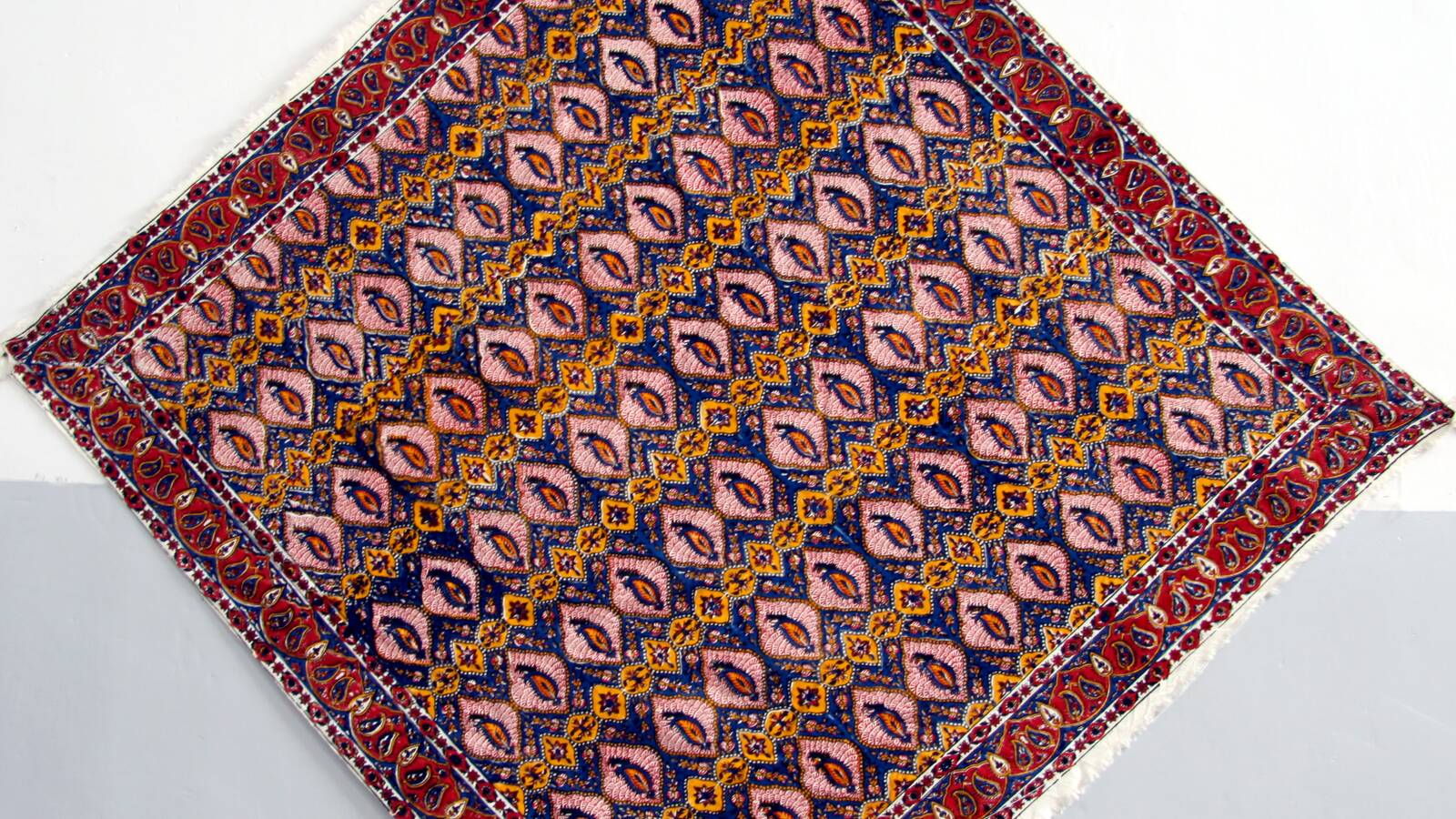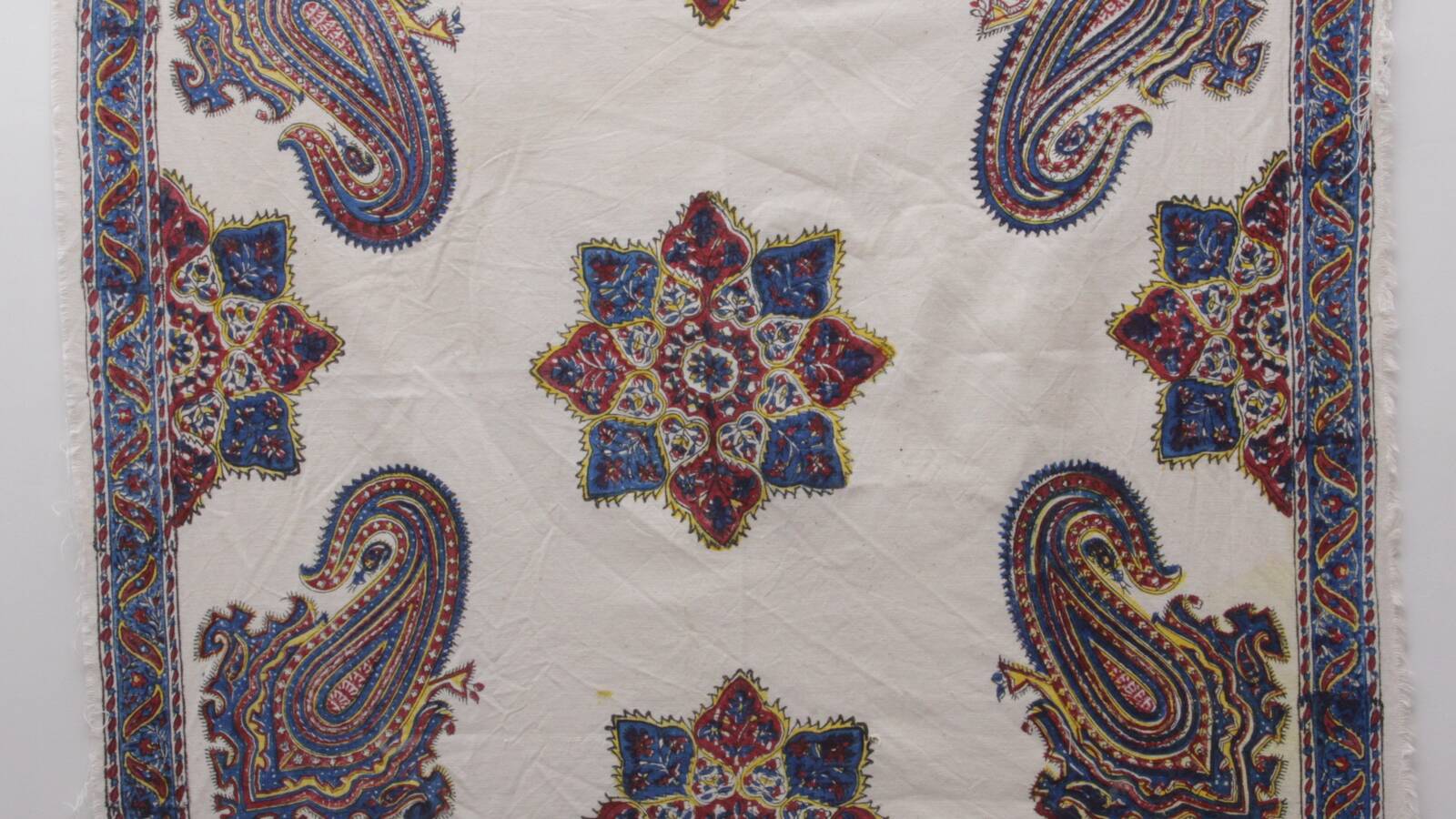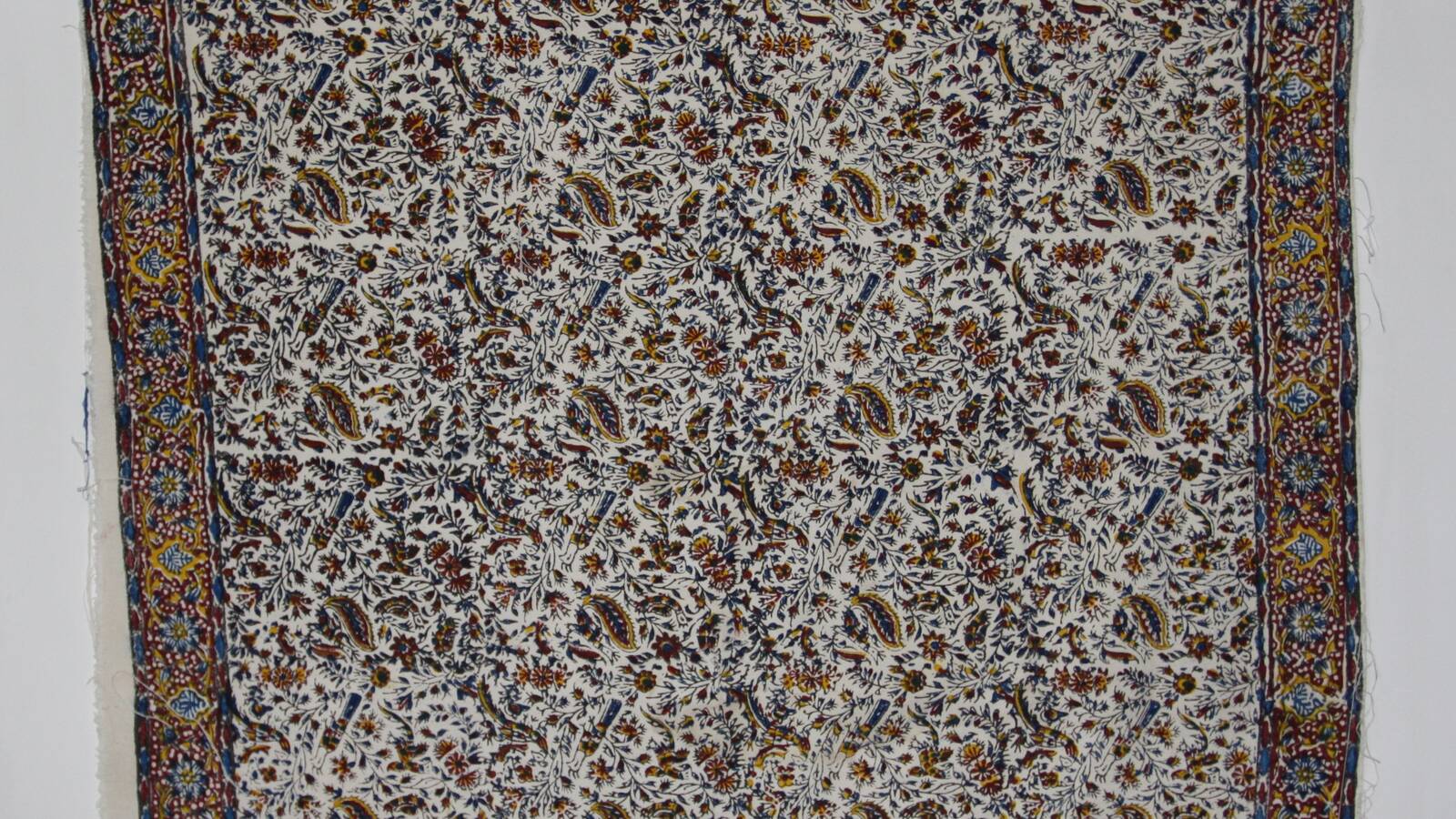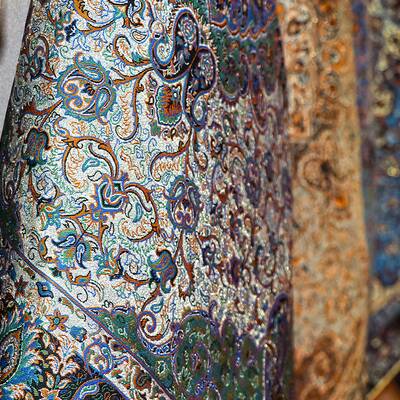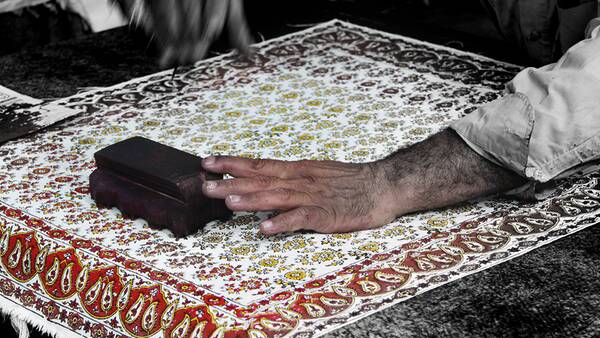
Qalamkari (Semnan)
All handicrafts’ products dyed and designed by brush, frame and stencil are classified into the category of the traditional printing like Qalamkari and batik. Although Qalamkari printing reminds us of Isfahan city, it is also one of the handicrafts of Semnan province. This method of dying with wooden frames are carried out on the cotton or linen or simple fabrics like calico fabric. The first and foremost phase of Qalamkari printing is probably making the wooden frames.
In this phase, the artisan outlines the pattern with pencil on the parchment or wax paper and then they separate the color spaces in a way that each part of the pattern is distinct from the rest of the pattern based on its color. The motif of each color is transferred to a thin layer of pears or hawthorn while its surronding is carved by a knife or chisel in order for motives to be bossed. There are four frames made for each motif, each transferring one single color to the piece of fabric in a way that they altogether complete the dying. The colors and their order of applying them on the fabric is in this way: the first is black, then red, blue and yellow. Sometimes, they use green and brown as secondary colors. In addition to dying materials, some other materials like castor oil or tragacanth are used for adjusting the density of color to be not only easily absorbed by the fabric, but also prevent motives from running while drying. After choosing and preparing the desired fabric in a proper size, margin embroidery and twisting fringe, the fabric is ready to dye.
If the artist wants to whiten the fabric in order to facilitate the color absorption, they put it into the flowing water for a couple of days. In this way, the starch is eliminated and the absorbency increased. In order to fade the fabric, it is enough to put it exposed to the strong sunlight, splash water and dry it repeatedly. Different Qalamkari products in Semnan province are tablecloth, bindle, prayer rug and so on. Semnan and Damghan used to be among the main centers of Qalamkari, however, it became extinct after the launch of the first spinning factory in the province. Fortunately, today this craft, which is called Chitgari in the province, is being revived, taught and produced, by Damghani artists.
